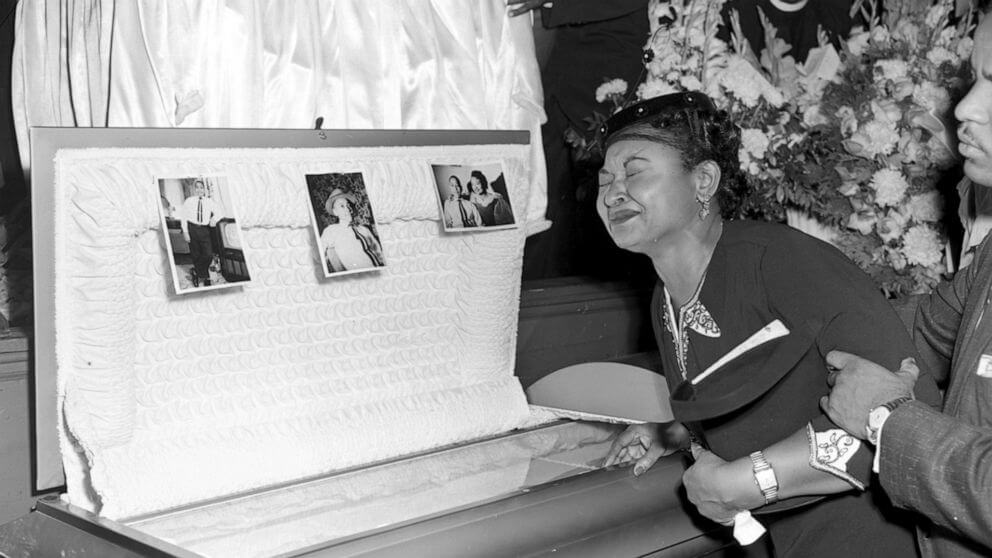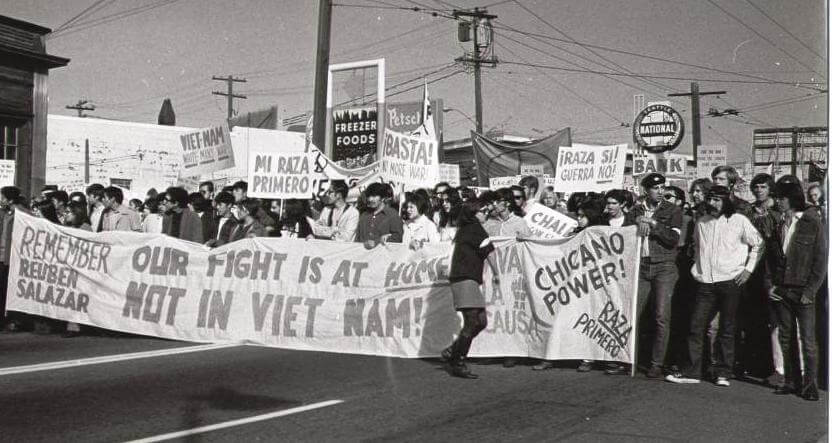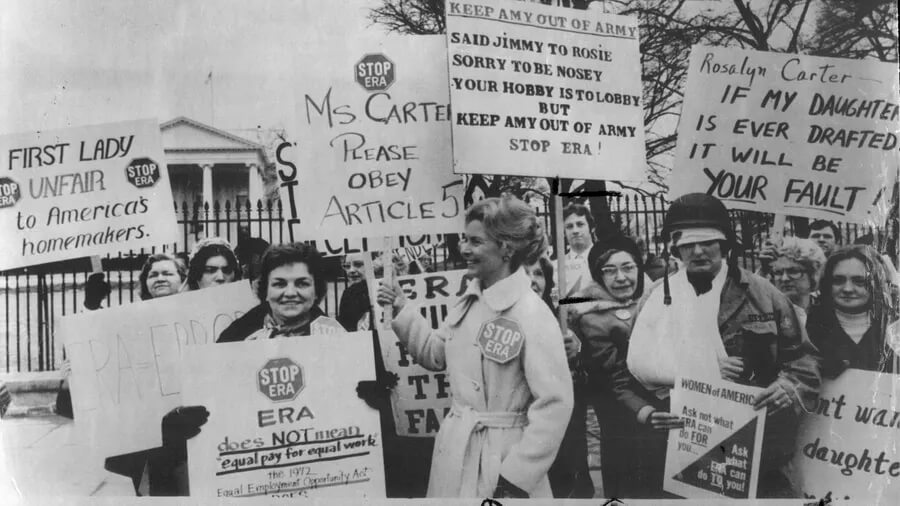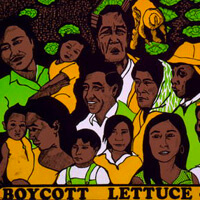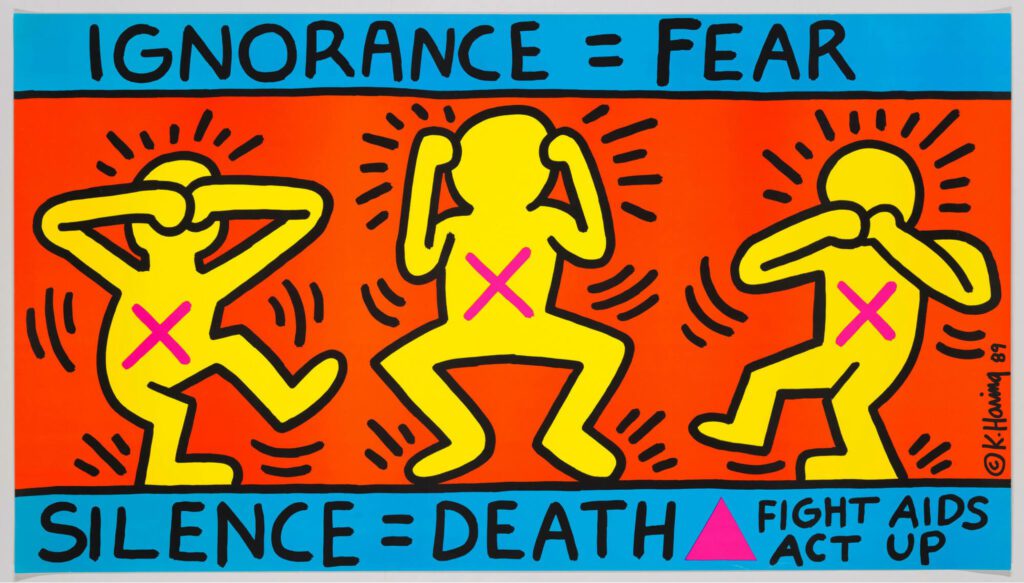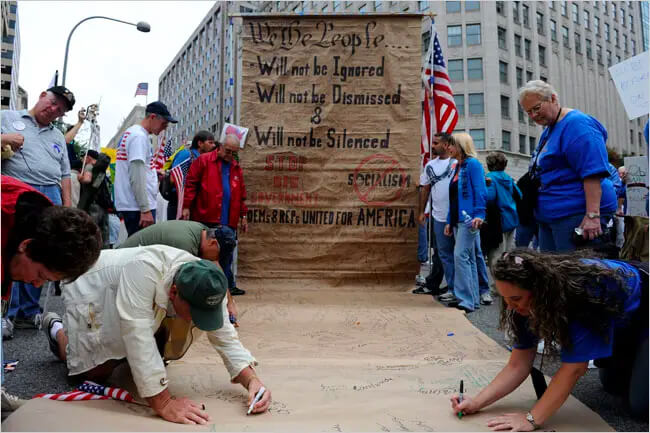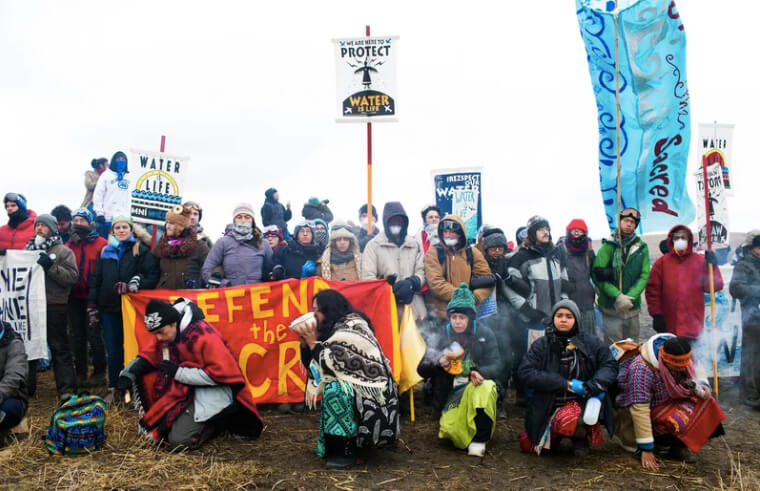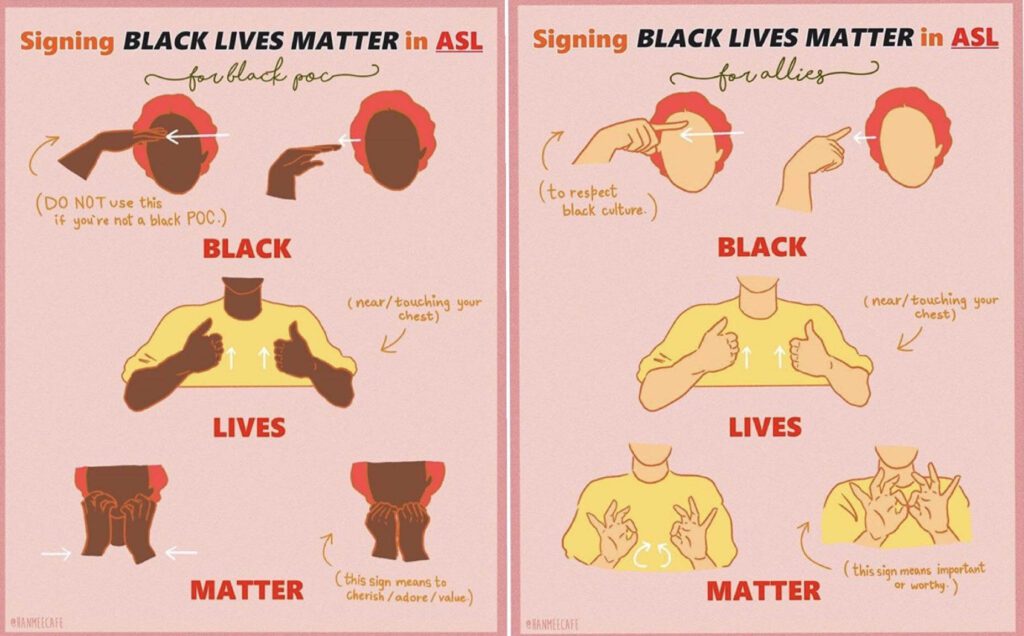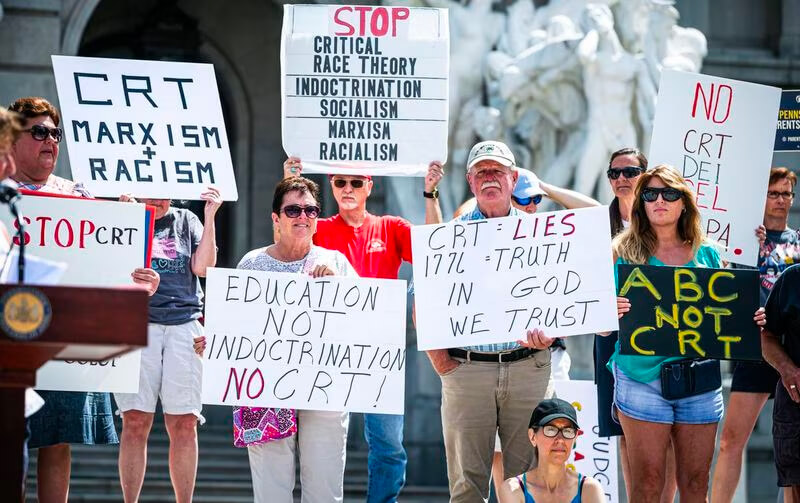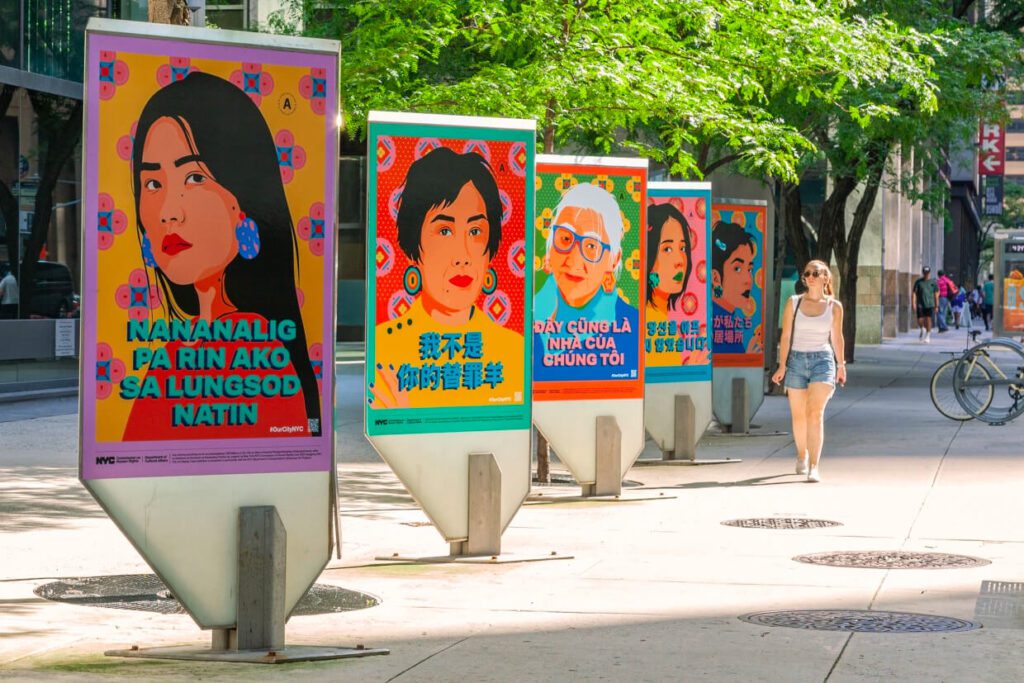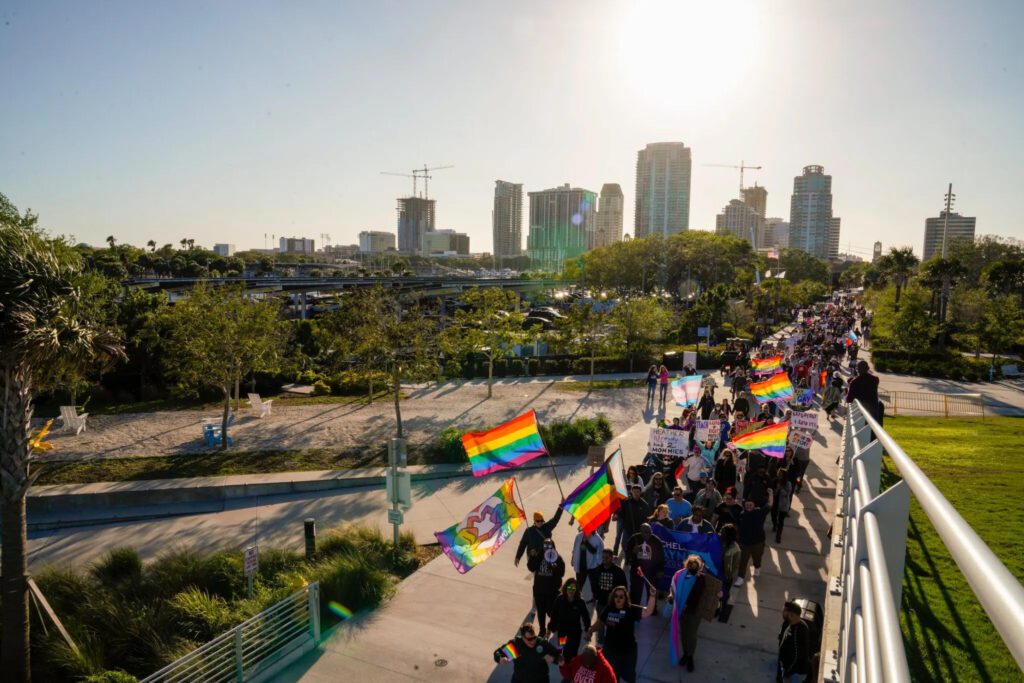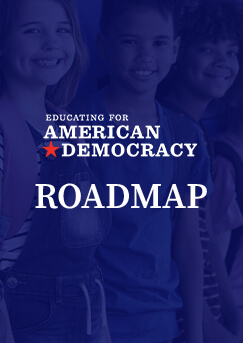The curated resources linked below are an initial sample of the resources coming from a collaborative and rigorous review process with the EAD Content Curation Task Force.
 Reset All
Reset All
In this interactive episode, KidCitizen uses a historic panoramic map as an object for active inquiry to engage children in wondering about this representation of a place where people live. Students closely observe the geographic features, like rivers, shorelines, and farmland along with its plant life, animal life, and man-made structures. Students collect clues in the researcher journal and use them throughout the adventure. There are a number of pathways for inquiry. Students may apply their geographic and historical thinking strategies to wonder about movement of people or reflect on the unique qualities of the area that define it as a place.

The Roadmap


KidCitizen


This resource engages students in the history, location, and past and present culture of the Anishinabe, and American Indian Nation. The focus on one Indigenous nation allows students to acquire a differentiated and accurate understanding of one of the many diverse peoples and cultures living throughout the lands that are now referred to as North and South America, in addition to recognizing elements of a common history of conquest and displacement by Europeans that affected all Native American peoples.

The Roadmap


National Endowment for the Humanities


This lesson plan helps students analyze historical images and documents. Students explore the town and history of Buxton, Iowa. Buxton existed only for about 20 years but boasted a population of African-American former sharecroppers and Swedish immigrants who enjoyed economic prosperity and racial equality in this unique Iowa town during the early 1900s.
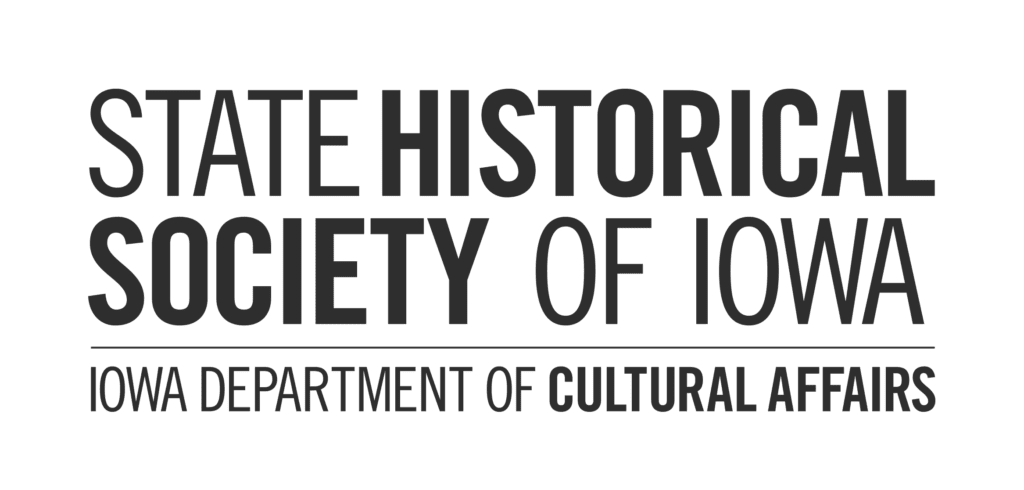
The Roadmap



State Historical Society of Iowa


In this lesson on the experiences and contributions of immigrants to the United States, elementary students explore the reasons why people volutarily or were forced to move to a new country, both earlier in history and recently. Using primary sources spanning 100 years, students generate questions and look for answers. Students will also interview adults in their lives or at school about their own immigration stories.

The Roadmap




Emerging America - Collaborative for Educational Services


Students delve into primary sources about the Hopi in order to engage with Hopi land, language, song, dance, and culture's relationship to place.

The Roadmap




National Endowment for the Humanities


This lesson teaches students about the responsibilities of the National Park Service in preserving both nature and culture. Students will engage with the changing landscape of Yellowstone National Park and Mesa Verde.

The Roadmap



National Park Service


NK360° Helpful Handouts: Guidance on Common Questions provide a brief introduction to teachers about important topics regarding Native American life, cultures, and communities. Native Life and Food: Food Is More Than Just What We Eat explores Indigenous relationships with food. Use this guide to discuss the continuing legacies of sustainable Native food practices. Culturally sensitive activities and resources related to Indigenous foods are provided.
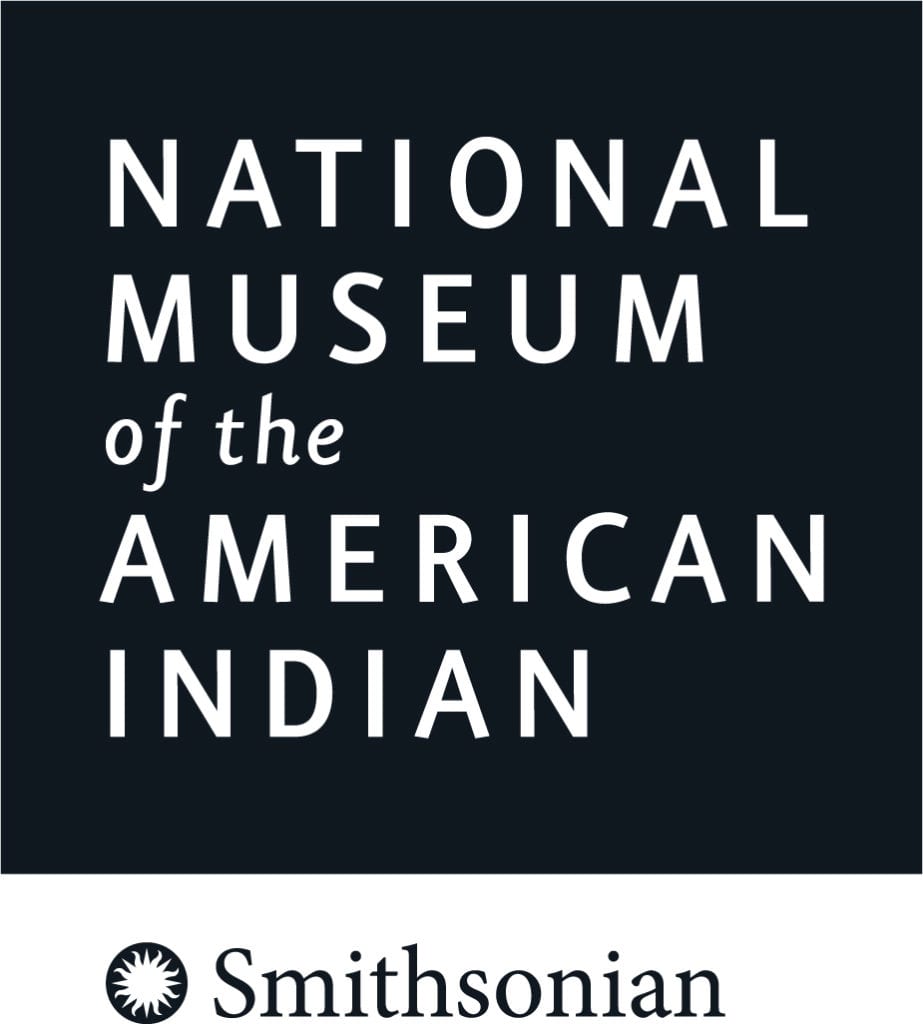
The Roadmap

Smithsonian National Museum of the American Indian


With ever-evolving media, visual images play a significant and powerful role in moments of social change. This spotlight kit, made up almost entirely of primary source images ripe for visual analysis, focuses on moments of protest and resistance to government policies and other symbols of authority. Resources include images of events, movements and moments of resistance from the mid-20th to the early 21st centuries. In these moments, photographs and other media play the dual role of capturing the message and, in helping to spread its visibility, contributing to the fight for social change.
This image-based Spotlight Kit lends itself particularly well to a range of uses in the classroom: as an inquiry activity to introduce an historic era or the theme of protest; with diverse learners, including students with identified language processing disorders or students who are English Language Learners; and as a supplement to other text-based primary sources.
While no set of images can comprehensively capture any era, these particular examples were selected for their intentional use of visual media or the ways in which these moments have become symbolic and iconic. The images also include powerful slogans used by activists, many of which connect and echo across different events in this collection.
The resources in this spotlight kit are intended for classroom use, and are shared here under a CC-BY-SA license. Teachers, please review the copyright and fair use guidelines.





The Roadmap





















- Primary Resources by Decade1955-1960s (4)1970s-1980s (7)2000-2022 (10)
- All 21 Primary ResourcesMamie Till Mobley weeps at her son's funeral (1955)Mamie Till Mobley weeps at her son's funeral on Sept. 6, 1955, in Chicago. Mobley insisted that her son's body be displayed in an open casket forcing the nation to see the brutality directed at Blacks in the South. AP, FILE
Following the lynching murder of her fifteen-year-old son, Emmett Till,, Mamie TIll Mobley insisted on an open casket at his funeral; according to Time magazine, “When Till’s mother Mamie came to identify her son, she told the funeral director, ‘Let the people see what I’ve seen.’” The graphic images of his beaten body captured the attention of people across the United States, and the photo’s publication in Jet magazine is widely considered a galvanizing moment for the Civil Rights Era.
CitePrintShareShapiro, Emily. “Emmett Till's childhood home is named a Chicago landmark.” ABC News, 28 January 2021, https://abcnews.go.com/US/emmett-tills-childhood-home-named-chicago-landmark/story?id=75536520.
“The Photo That Changed the Civil Rights Movement.” TIME, 10 July 2016, https://time.com/4399793/emmett-till-civil-rights-photography/.
The March on Washington (1963)The March on Washington, 1963The March on Washington, 1963 By 1963 the Civil Rights Movement had grown substantially. They had support for both the black and white communities, as well as many celebrities. The purpose of this march was to gain national support for legislation in Congress. One of the most famous moments of the march was Dr. Martin Luther King Jr.'s “I Have a Dream” speech. Originally proposed in 1941 as the “March for Jobs and Freedom” by A. Philip Randolph, photographs of the March became – and remain – some of the most iconic images of the Civil Rights Movement.
CitePrintShareLeffler, W. K., photographer. (1963) Civil rights march on Washington, D.C. / WKL. Washington D.C, 1963. [Photograph] Retrieved from the Library of Congress, https://www.loc.gov/item/2003654393/.
Memphis Sanitation Workers’ Strike (1968)US National Guard troops block off Beale Street in Memphis, Tennessee, as civil rights protesters march for the third day in a row. Bettmann/Getty Images (March 29, 1968)Any number of images from the Civil Rights era would benefit a unit on freedom of speech, but this particular image does a few things: (1) it marks the occasion immediately before Martin Luther King’s assassination; (2) it provides an image of a single text used over and over, in contrast to the image above with multiple demands; and (3) it juxtaposes protesters exercising their first amendment rights with National Guard troops wielding weapons.
CitePrintShare“1968: The year in pictures.” CNN, https://www.cnn.com/interactive/2018/05/world/1968-cnnphotos/. Accessed 26 February 2023.
John Carlos and Tommie Smith raise fists in protest as they receive their Olympic medals (1968)John Carlos and Tommie Smith raise fists in protest as they receive their Olympic medals (1968)Aware of the platform provided by international television coverage of the Olympics, medal-winning U.S. track athletes John Carlos and Tommie Smith chose to raise a fist during their medal ceremony to protest racial inequality in the country they were representing, at the very moment the Star Spangled Banner was playing.
CitePrintShareLayden, Tim. “John Carlos, Tommie Smith: 1968 Olympics black power salute.” Sports Illustrated, 3 October 2018, https://www.si.com/olympics/2018/10/03/john-carlos-tommie-smith-1968-olympics-black-power-salute.
Women's Strike for Peace and Equality (1970)Women's Strike for Peace and Equality, New York City, Aug. 26, 1970. Eugene Gordon—The New York Historical Society / Getty ImagesThe 1970s Women’s Strike was organized by feminist author Betty Friedan, to commemorate the fiftieth anniversary of the 19th Amendment, which prevented women from being denied the vote “on the basis of sex.” As reported by Time, “Friedan’s original idea for Aug. 26 was a national work stoppage, in which women would cease cooking and cleaning in order to draw attention to the unequal distribution of domestic labor, an issue she discussed in her 1963 bestseller The Feminine Mystique. It isn’t clear how many women truly went on ‘strike’ that day, but the march served as a powerful symbolic gesture. Participants held signs with slogans like ‘Don’t Iron While the Strike is Hot’ and ‘Don’t Cook Dinner – Starve a Rat Today.’”
CitePrintShareCohen, Sascha. “Women's Equality Day: The History of When Women Went on Strike.” Time, 26 August 2015, https://time.com/4008060/women-strike-equality-1970/.
Poster image from “Women's Strike for Equality.” Wikipedia, https://en.wikipedia.org/wiki/Women%27s_Strike_for_Equality.
Protests against the Vietnam War (1969-70)Protest against the Vietnam War, Texas, December, 1969. Credit: Jimmy Cochran.Antiwar march October 31, 1970, Seattle, two months after the death of Reuben Salazar in the Los Angeles Chicano Moratorium protestVietnam War Protests The Vietnam protest movement represented a growing anti-war movement in the United States in the late 1960s to early 1970s. Protestors spanned the racial spectrum and employed varying methods to end the war in Vietnam, started by the United States.
In many cases, anti-war protests combined with efforts to turn attention to domestic issues. As described in the Mapping American Social Movements Project of the University of Washington, “Chicanos in Los Angeles formed alliances with other oppressed people who identified with the Third World Left and were committed to toppling U.S. imperialism and fighting racism…. The Chicano Moratorium antiwar protests of 1970 and 1971…reflected the vibrant collaboration between African Americans, Japanese Americans, American Indians, and white antiwar activists that had developed in Southern California.”
CitePrintShareCochran, Jimmy W. “[Line of Protesters Against Vietnam War] - The Portal to Texas History.” The Portal to Texas History, https://texashistory.unt.edu/ark:/67531/metapth1276191/.
Estrada, Josue. Chicano Movement Geography - Mapping American Social Movements, https://depts.washington.edu/moves/Chicano_geography.shtml.
Disability Rights Movement Protest for the Rehabilitation Act (1973)Disability Rights Movement Protest for the Rehabilitation Act 1973, photographer Tom Olin Greyhound Bus Depot in Los Angeles, Diane Coleman, Steve Remington and Rick Wilson.The Civil Rights Movement for Black equality inspired many other movements, including a national push for disability rights. The Rehabilitation Act of 1973 prohibited discrimination on the basis of disability and protected equal access for people with disabilities in areas including public services, employment, and education.
CitePrintShare“History and Timeline | Department on Disability.” Department on Disability, https://disability.lacity.org/resources/celebrate-ada-30th-anniversary/history-and-timeline.
Protests for and against the Equal Rights Amendment (1973)Protests led by Phyllis Schlafly, center, opposed the passage of the Equal Rights Amendment, 1973.Women supporting the ERA carry a banner down Pennsylvania Avenue in Washington DC on August 26, 1977The Equal Rights Amendment (ERA) states: "Equality of rights under the law shall not be denied or abridged by the United States or by any state on account of sex." First proposed as an Amendment to the Constitution in 1923, Congress finally passed the ERA in 1972. The senate vote was overwhelming: 84 to 8. The Amendment then went to state legislatures for approval, requiring 38 for ratification. 22 states ratified in that first year, and 8 more in 1973. But then a grassroots opposition movement made significant inroads. 35 states eventually approved it by 1977, but the passage of the Amendment then stalled and the deadline expired in 1982.
In these photos, women who fought both for and against the Amendment’s passage are pictured protesting. In the top photograph, American attorney and conservative activist Phyllis Schlafly, founder of STOP-ERA, leads a protest against the Amendment. In the bottom photograph, women dressed in white – evoking suffragists of the past – protest in favor of the Amendment in Washington, DC on August 26, 1977 – the same date of the Women’s Strike seven years earlier (also included in this Spotlight Kit).
CitePrintShare“ERA wouldn't be good for women | Tuesday's letters.” Tampa Bay Times, 9 September 2019, https://www.tampabay.com/opinion/letters/2019/09/09/era-wouldnt-be-good-for-women-tuesdays-letters/.
Prasad, Ritu. “Women's Equal Rights Amendment sees first hearing in 36 years.” BBC, 30 April 2019, https://www.bbc.com/news/world-us-canada-44319712.
Boycott Lettuce & Grapes Poster (1978)Boycott Lettuce & Grapes (1978)Dolores Huerta Lettuce Boycott Poster: Dolores Huerta and Cesar Chavez fought together for the rights and protections of the workers who picked fruits and vegetables in the fields and orchards, organizing a workers’ union and boycotts to gain attention and create economic pressure for the cause. Huerta led a successful lettuce and grape boycott, first in California and later on a national scale, that paved the way for migrant labor protection laws.
CitePrintShare(1978) Boycott Lettuce & Grapes. United States, 1978. [Chicago: Women's Graphics Collective] [Photograph] Retrieved from the Library of Congress, https://www.loc.gov/item/93505187/.
Lily Chin Holds a Photograph of Her Son Vincent Chin (1983)As explained by the New York Times, “Vincent Chin, a Chinese American man who lived near Detroit, was beaten to death with a baseball bat after being pursued by two white autoworkers in 1982…Mr. Chin was killed at a time when the rise of Japanese carmakers and the collapse of Detroit’s auto industry had contributed to a rise in anti-Asian racism.” The two men who murdered Chin accepted plea deals, serving only probation and paying about $3000 each in fines. In this image, Chin’s mother, Lily Chin, holds a photograph of her son.
CitePrintShareSmith, Mitch. “Decades After Infamous Beating Death, Recent Attacks Haunt Asian Americans.” The New York Times, 17 June 2022, https://www.nytimes.com/2022/06/16/us/vincent-chin-anti-asian-attack-detroit.html.
Keith Haring, Ignorance = Fear / Silence = Death (1989)Keith Haring, Ignorance = Fear / Silence = Death (1989)In the earliest years of the emergency of AIDS as a public health crisis, the American Government’s response was limited in terms of both resources dedicated to fighting the disease and public discussion of the disease, its victims, and public health strategies for prevention. Activists coined the phrase “silence=death” in 1987 to help raise awareness and spur the government to devote greater resources and attention.
CitePrintShareSherwin, Skye. “Keith Haring’s Ignorance = Fear: political activism | Art and design.” The Guardian, 23 August 2019, https://www.theguardian.com/artanddesign/2019/aug/23/keith-haring-ignorance-equals-fear.
Tea Party Protests (2009)Tea Party protest at the Connecticut State Capitol in Hartford, Connecticut. April 15, 2009. Organizers reported that the police estimate of attendance was 5000 people.Protesters in Washington D.C. during a rally, September 2009.After the financial crisis of 2008, a CNBC commentator, Rick Santelli, argued against President Obama’s mortgage relief policies and evoked the Revolutionary War-era Tea Party in calling for a protest against them. The “Tea Party Movement” took hold among some conservative and libertarian circles, leading to rallies and political campaigns arguing against federal taxation and in favor of fiscal conservatism and a free market economy. Several rallies were held specifically on April 15th – Tax Day – 2009.
CitePrintShareRoss, Sage. “File:Tea Party Protest, Hartford, Connecticut, 15 April 2009 - 041.jpg.” Wikimedia Commons, https://commons.wikimedia.org/wiki/File:Tea_Party_Protest,_Hartford,_Connecticut,_15_April_2009_-_041.jpg.
Zeleny, Jeff. “In Washington, Thousands Stage Protest of Big Government.” The New York Times, 12 September 2009, https://www.nytimes.com/2009/09/13/us/politics/13protestweb.html.
Occupy Wall Street / Park Avenue Millionaires Protest (2011)Occupy Wall Street supporters take part in the Park Avenue millionaires protest in New York on October 11.Occupy Wall Street Protests Starting in Washington, then moving to New York, protesters camped out in Zucotti park for an extended period of time in 2011 while voicing their concern about inequality in America. The protesters had a unique style of protesting employing methods such as “the people’s mic,” organized childcare, a library, and were predominantly “leaderless.” They had regularly scheduled marches throughout New York City for a variety of issues. Some critique focused on how participants were mostly white, accused of antisemitism, and had an amorphous set of demands.
CitePrintShareWires, N. P. R. S. and. (2011, October 15). Occupy Wall Street inspires worldwide protests. NPR. Retrieved February 27, 2022, from https://www.npr.org/2011/10/15/141382468/occupy-wall-street-inspires-worldwide-protests
Kastenbaum, Steve. “Occupy Wall Street: An experiment in consensus-building.” CNN, 18 October 2011, https://www.cnn.com/2011/10/18/us/occupy-wall-street-consensus-building/index.html.
Rally in Support of DACA (2017)In September of 2017, Attorney General Jeff Sessions’ announcement that the Trump Administration planned to end DACA, or the Deferred Action for Childhood Arrivals program, was met with protests around the country. As reported by National Public Radio, “hundreds of demonstrators gathered outside the White House. They shouted ‘We are America’ and ‘We want education. Down with deportation.’ The marchers then proceeded to the Department of Justice…and to the Trump International Hotel on Pennsylvania Avenue, where they staged a sit-in.”
CitePrintShareNeuman, Scott. “Protesters In D.C., Denver, LA, Elsewhere Demonstrate Against Rescinding DACA.” NPR, 5 September 2017, https://www.npr.org/sections/thetwo-way/2017/09/05/548727220/protests-in-d-c-denver-la-elsewhere-protest-rescinding-daca.
Dakota Access Pipeline Protest (2017)Dakota Access Pipeline Protests (2017)The planned construction of The Dakota Access Pipeline and resulting protests is a recent example of Native Americans and U.S. industry clashing. One side feared for the quality of their water and lands being abused. Proponents of the pipeline included union members and business, who viewed the pipeline’s development as essential to the growth of the economy.
CitePrintShareHersher, R. (2017, February 22). Key moments in the Dakota Access Pipeline Fight. NPR. Retrieved February 27, 2022, from https://www.npr.org/sections/thetwo-way/2017/02/22/514988040/key-moments-in-the-dakota-access-pipeline-fight
Iowa Public Radio | By Amy Mayer. (2020, August 28). Public Voices Support and oppose Bakken pipeline across Iowa. Iowa Public Radio. Retrieved February 26, 2022, from https://www.iowapublicradio.org/environment/2015-11-12/public-voices-support-and-oppose-bakken-pipeline-across-iowa#stream/0
How do you sign ‘Black Lives Matter’ in ASL? (2020)How do you sign ‘Black Lives Matter’ in ASL? (2020)As reported by the Los Angeles Times, the intersection of disability rights and racial equity can be complicated for deaf members of the Black Lives Matter Movement: “The phrase begins with four fingers cut across the brow, followed by two thumbs drawn up like breath from navel to chest, ending with a fierce tug with two hands down from the chin into fists toward the heart.
Black. Life. Cherish. This is how Harold Foxx and many other black deaf Angelenos sign ‘Black Lives Matter,’ though it is by no means a universal translation. .. It is a reminder of an ongoing struggle for equity, representation and authenticity in ASL, a language deeply scarred by racism and exclusion.”
CitePrintShareSharp, Sonja. “Column One: How do you sign 'Black Lives Matter' in ASL? For black deaf Angelenos, it's complicated.” Los Angeles Times, 8 June 2020, https://www.latimes.com/california/story/2020-06-08/how-do-you-sign-black-lives-matter-in-asl-for-black-deaf-angelenos-its-complicated.
Black Lives Matter Plaza (2020)Black Lives Matter Plaza (2020)On June 5, 2020, CNN reported: “Washington, DC is painting a message in giant, yellow letters down a busy DC street ahead of a planned protest this weekend: BLACK LIVES MATTER.
The massive banner-like project spans two blocks of 16th Street, a central axis that leads southward straight to the White House. Each of the 16 bold yellow letters spans the width of the two-lane street, creating an unmistakable visual easily spotted by aerial cameras and virtually anyone within a few blocks. The painters were contacted by Mayor Muriel Bowser and began work early Friday morning, the mayor’s office told CNN. Bowser has officially deemed the section of 16th Street bearing the mural ‘Black Lives Matter Plaza,’ complete with a new street sign.”
CitePrintShareSource of text: Willingham, AJ. “Washington, DC paints a giant 'Black Lives Matter' message on the road to the White House.” CNN, 5 June 2020, https://www.cnn.com/2020/06/05/us/black-lives-matter-dc-street-white-house-trnd/index.html.
Source of photo: “DC paints huge Black Lives Matter mural near White House.” WCTV, 5 June 2020, https://www.kktv.com/content/news/DC-paints-huge-Black-Lives-Matter-mural-near-White-House-571049311.html.
Protests against Mask Mandates (2021)People demonstrate against mask mandates at a Cobb county, Georgia, school board meeting last week. Photograph: Robin Rayne/Zuma Press Wire/Rex/Shutterstock (2021)Families protest any potential mask mandates before the Hillsborough County School Board meeting last month in Tampa, Fla.During the height of the Coronavirus pandemic, all levels of government – federal, state, and local – were required to respond to information emerging daily about what policies and practices would be safest for the public. In many places, including public spaces and schools, people were required to wear masks. Some people pushed back against these requirements, arguing that mandates were a violation of their individual rights.
CitePrintShareWong, Julia Carrie. “Masks off: how US school boards became 'perfect battlegrounds' for vicious culture wars.” The Guardian, 24 August 2021, https://www.theguardian.com/us-news/2021/aug/24/mask-mandates-covid-school-boards.
Shivaram, Deepa. “'Mask Wars' Are Erupting In Schools As Students Return : Back To School: Live Updates.” NPR, 20 August 2021, https://www.npr.org/sections/back-to-school-live-updates/2021/08/20/1028841279/mask-mandates-school-protests-teachers.
Rally against CRT in Schools (2021)Capitol rally to “stop critical race theory in Pennsylvania schools.” Harrisburg, Pennsylvania, July 14, 2021. Dan GleiterWhile “Critical Race Theory” (CRT) is taught primarily in law schools, protests began in 2021 against the teaching of CRT at local school board meetings in many places across the country. Often, participants in these protests raised a range of concerns about how topics including, but not limited to, race are covered in school curricula. These protests became part of a larger “parents’ rights” movement, arguing that parents should have a greater say in determining what their children learn in school.
CitePrintShareDeJesus, Ivey. “Critical race theory: What it is, what it isn't, and what it means for education in Pennsylvania.” Penn Live, 15 July 2021, https://www.pennlive.com/news/2021/07/critical-race-theory-the-nationwide-debate-is-emerging-in-pennsylvania.html.
“I Still Believe in Our City” Public Art (2021)The “I Still Believe In Our City” public art series was created in partnership with the New York City Commission on Human Rights. Courtesy Amanda Phingbodhipakkiya"I Am Not Your Scapegoat" poster.Courtesy Amanda PhingbodhipakkiyaAs reported by NBC News, “Last winter, as violent attacks against Asian elders began to spike, vividly painted portraits of Asian, Pacific Islander and Black people — flanked by vibrant florals and messages like ‘I am not your scapegoat’ — appeared on the walls of New York City's busiest subway and bus stops. Amanda Phingbodhipakkiya’s I Still Believe In Our City public art series, created in partnership with the New York City Commission on Human Rights, reminded millions of commuters of the humanity, diversity and beauty of Asian Americans at a time when many saw them as mere carriers of a deadly virus.”
CitePrintShareWang, Claire. “'I am not your scapegoat': See the art created by Asian Americans in a year of anti-Asian hate.” NBC News, 27 December 2021, https://www.nbcnews.com/news/asian-america/-not-scapegoat-see-art-created-asian-americans-year-anti-asian-hate-rcna9058.
March against Florida House Bill 1557 (2022)Demonstrators headed toward a pier in St. Petersburg during a rally against the bill.As reported by the New York Times in March of 2022, Gov. Ron DeSantis of Florida signed House Bill 1557, “which supporters call the ‘Parental Rights in Education’ bill, but that opponents refer to as the ‘Don’t Say Gay’ bill.” Among the provisions of the bill, “Instruction on gender and sexuality would be constrained in all grades; schools would be required to notify parents when children receive mental, emotional or physical health services, unless educators believe there is a risk of ‘abuse, abandonment, or neglect’; and parents would have the right to opt their children out of counseling and health services.”
CitePrintShareGoldstein, Dana. “What’s in House Bill 1557, Which Opponents Call ‘Don’t Say Gay.’” The New York Times, 18 March 2022, https://www.nytimes.com/2022/03/18/us/dont-say-gay-bill-florida.html.
Education for American Democracy


In this lesson, students practice their sourcing, corroboration and close reading skills by examining two diary entries of Spanish explorers involved in the Portola Expedition. Students are asked to consider the relative strengths and weaknesses in using these diary accounts to understand the purpose of the expedition and life for Native Americans across California in the 18th century.

The Roadmap



Standford History Education Group




